
Cerro Pan de Azúcar: Uruguay's Sugarloaf Mountain
Discover Cerro Pan de Azúcar in Uruguay, a natural landmark offering stunning views, diverse wildlife, and a memorable hiking experience near Piriápolis.
The Cerro Pan de Azúcar, or Sugarloaf Hill, is one of Uruguay’s most captivating natural landmarks. Towering at 423 meters above sea level, this hill offers breathtaking panoramic views of the surrounding countryside and the Atlantic Ocean. It is located near the charming town of Piriápolis, which is known for its beautiful beaches and quaint atmosphere. The hill is part of a nature reserve that covers 1,050 hectares, making it a haven for outdoor enthusiasts and nature lovers alike. The hike to the top of Cerro Pan de Azúcar is an adventure in itself. The trail is well-marked and takes you through lush forests and rocky paths. Along the way, you can spot a variety of native flora and fauna, including capybaras, foxes, and over 200 species of birds. Once at the summit, you are greeted by a large concrete cross that stands 35 meters tall, offering a perfect spot for photos and reflection. For those who prefer a more leisurely experience, the base of Cerro Pan de Azúcar has a visitor center with informative displays about the local ecosystem and history. There is also a small zoo that houses rescued animals native to Uruguay. This combination of natural beauty, wildlife, and panoramic views makes Cerro Pan de Azúcar a must-visit destination for any traveler in Uruguay.
Local tips in Cerro Pan de Azúcar
- Bring plenty of water and snacks for the hike; there are no facilities along the trail.
- Wear comfortable hiking shoes with good grip; the path can be rocky and uneven.
- Visit early in the morning or late afternoon to avoid the midday heat and enjoy cooler temperatures.
- Check the weather forecast before you go; the trail can be slippery and unsafe in wet conditions.
- Don’t forget your camera or smartphone; the views from the top are spectacular and perfect for photos.
- If you’re interested in local wildlife, bring binoculars for birdwatching along the trail.
Cerro Pan de Azúcar: Uruguay's Sugarloaf Mountain
The Cerro Pan de Azúcar, or Sugarloaf Hill, is one of Uruguay’s most captivating natural landmarks. Towering at 423 meters above sea level, this hill offers breathtaking panoramic views of the surrounding countryside and the Atlantic Ocean. It is located near the charming town of Piriápolis, which is known for its beautiful beaches and quaint atmosphere. The hill is part of a nature reserve that covers 1,050 hectares, making it a haven for outdoor enthusiasts and nature lovers alike. The hike to the top of Cerro Pan de Azúcar is an adventure in itself. The trail is well-marked and takes you through lush forests and rocky paths. Along the way, you can spot a variety of native flora and fauna, including capybaras, foxes, and over 200 species of birds. Once at the summit, you are greeted by a large concrete cross that stands 35 meters tall, offering a perfect spot for photos and reflection. For those who prefer a more leisurely experience, the base of Cerro Pan de Azúcar has a visitor center with informative displays about the local ecosystem and history. There is also a small zoo that houses rescued animals native to Uruguay. This combination of natural beauty, wildlife, and panoramic views makes Cerro Pan de Azúcar a must-visit destination for any traveler in Uruguay.
When is the best time to go to Cerro Pan de Azúcar?
Iconic landmarks you can’t miss
Reserva de Flora y Fauna del Pan de Azúcar
Explore the breathtaking landscapes and rich biodiversity at Reserva de Flora y Fauna del Pan de Azúcar, a premier wildlife refuge in Uruguay.
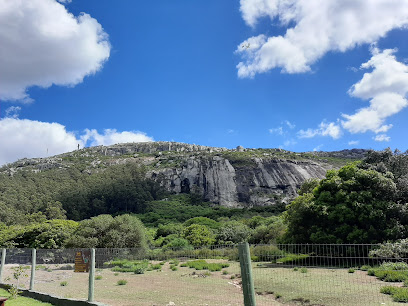
Zorrilla de San Martín Park
Experience the tranquility and natural beauty of Zorrilla de San Martín Park in Pan de Azúcar, your perfect escape for relaxation and recreation.
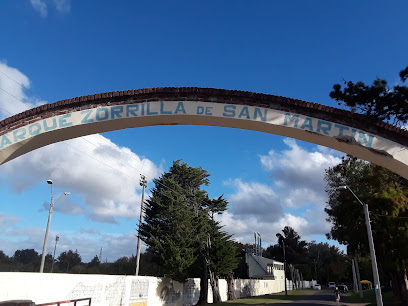
Cruz de Pan de Azúcar
Discover breathtaking views from Cruz de Pan de Azúcar, a stunning observation deck in Maldonado, Uruguay, perfect for nature lovers and photographers.
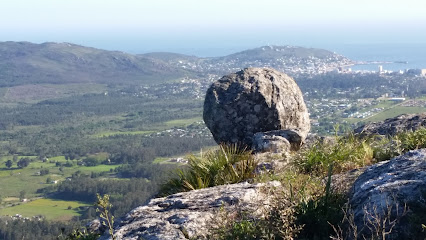
Entrada de ingreso al cerro y reserva Pan de Azúcar
Discover the stunning natural landscapes and rich biodiversity of Pan de Azúcar Ecological Park in Piriápolis, a paradise for nature lovers and outdoor enthusiasts.
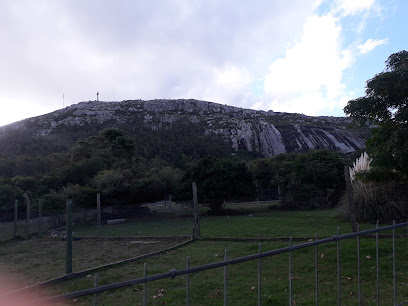
Reptilario del Cerro Pan de Azúcar
Explore the Reptilario del Cerro Pan de Azúcar, a unique animal park in Piriápolis showcasing fascinating reptiles and promoting wildlife conservation in a stunning natural setting.
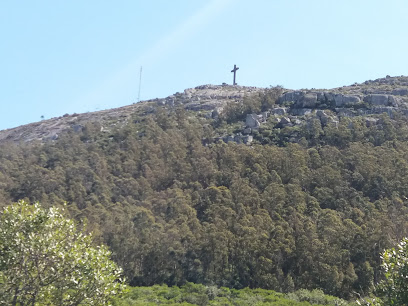
CERRO PAN DE AZUCAR
Discover the breathtaking views and vibrant wildlife of Cerro Pan de Azúcar, a top tourist attraction in Piriápolis, Uruguay, perfect for outdoor enthusiasts.
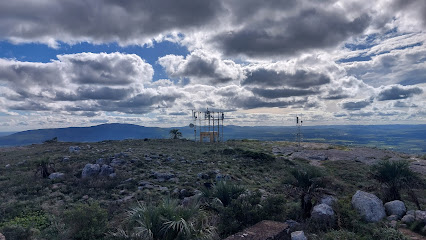
Reserva natural Pan de Azucar
Discover the breathtaking landscapes and diverse wildlife at Reserva Natural Pan de Azucar, a serene nature preserve in the heart of Uruguay.
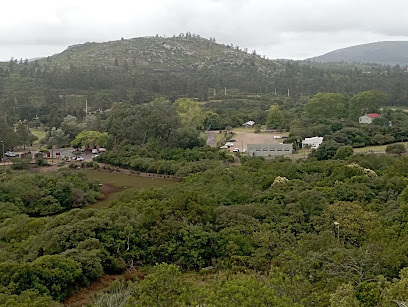
Cerro Pan de Azucar
Discover the stunning Cerro Pan de Azucar, a breathtaking mountain peak in Uruguay offering panoramic views and rich biodiversity for all nature lovers.
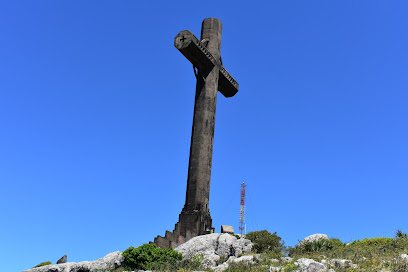
Ascenso al Cerro Pan de Azúcar
Explore the breathtaking heights of Cerro Pan de Azúcar, where adventure meets stunning views of Uruguay's spectacular coastline.
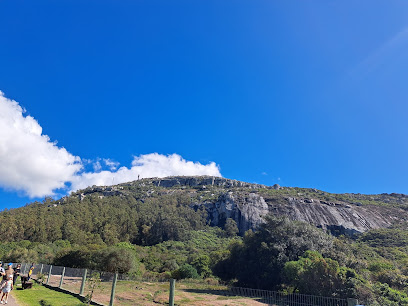
Canteras Del Cerro Pan De Azúcar
Experience the tranquil beauty of Uruguay at Canteras Del Cerro Pan De Azúcar, a serene farmstay amidst stunning landscapes and nature.
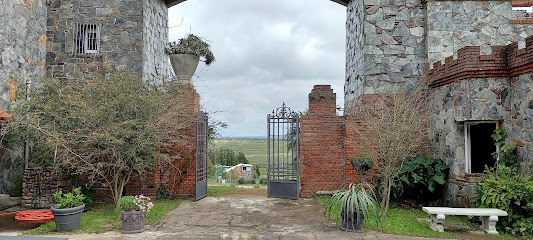
Senderos de Flora y Fauna Arroyo Pan de Azúcar
Explore the diverse ecosystems and natural beauty at Senderos de Flora y Fauna Arroyo Pan de Azúcar, a perfect destination for nature lovers in Uruguay.

Cerro de las Ánimas
Explore the breathtaking views and rich cultural history at Cerro de las Ánimas, a stunning landmark in Uruguay's Maldonado region.
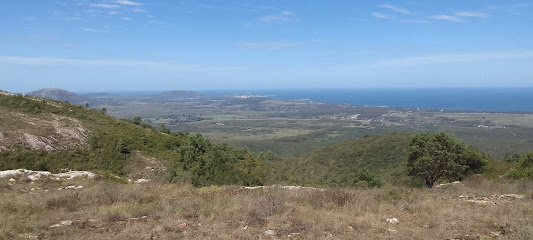
Cerro del Gigante
Experience the breathtaking vistas and serene beauty of Cerro del Gigante, a must-visit natural attraction near Piriápolis, Uruguay.
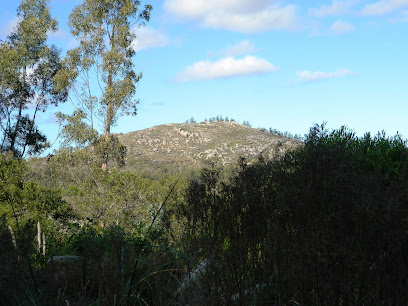
las abejitas
Discover the serene beauty of Las Abejitas, a stunning hiking area in Piriápolis, where nature meets adventure in Uruguay's breathtaking landscapes.
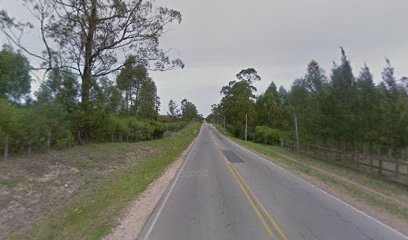
Unmissable attractions to see
Castillo Pittamiglio Las Flores
Explore Castillo Pittamiglio Las Flores, a historic castle in Maldonado, where architectural beauty meets rich history amidst stunning scenic vistas.

Rambla Piriapolis
Experience the breathtaking coastal beauty and vibrant atmosphere at Rambla Piriapolis, a must-visit tourist attraction in Uruguay.
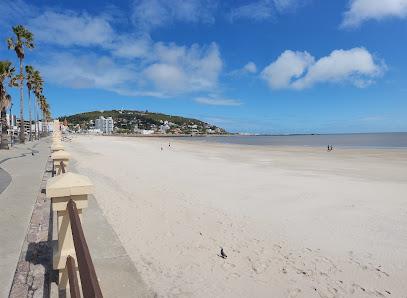
Paseo de la Pasiva
Discover the artistic charm and stunning coastal views of Paseo de la Pasiva in Piriápolis, a cultural gem for every traveler.
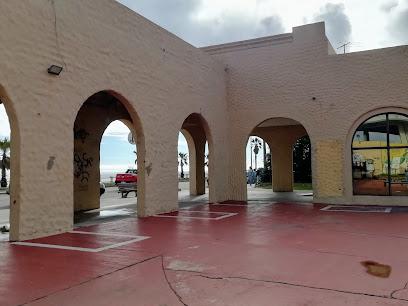
Playa San Francisco
Experience the serene beauty of Playa San Francisco, a hidden beach gem in Piriápolis, perfect for relaxation and picturesque sunsets.
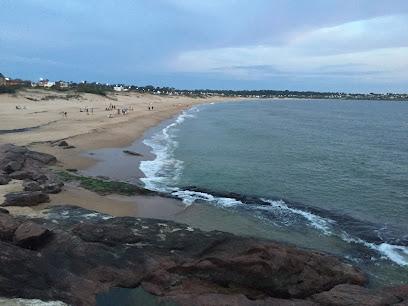
Church of Piria
Explore the serene beauty of the Church of Piria, a stunning architectural gem in the heart of Piriápolis, Uruguay, perfect for reflection and admiration.
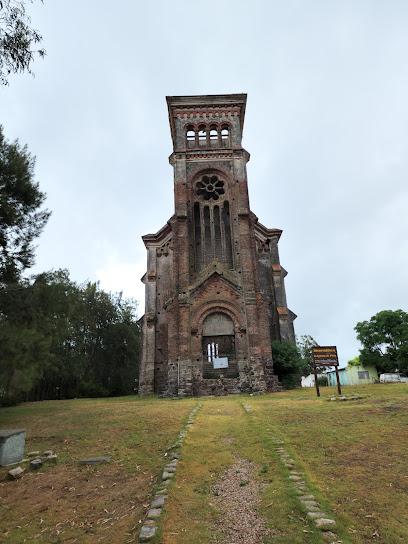
Cruz de Pan de Azúcar
Discover breathtaking views at Cruz de Pan de Azúcar, the ultimate observation deck in Piriápolis, Uruguay, surrounded by stunning landscapes and tranquility.

Punta Colorada Beach
Experience the beauty and tranquility of Punta Colorada Beach in Uruguay, a perfect destination for relaxation and adventure by the sea.
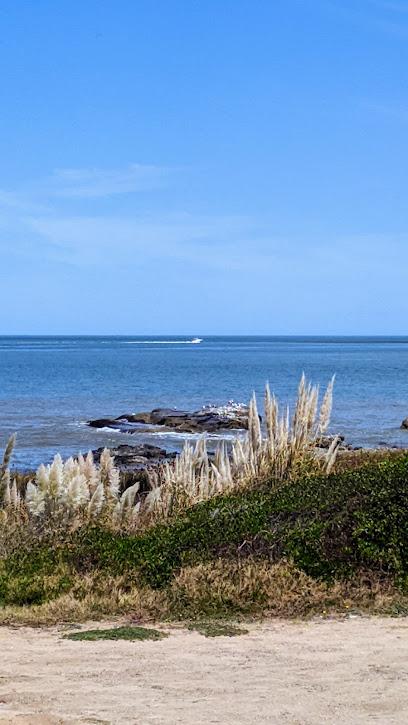
Cerro de los Burros
Experience breathtaking views and tranquility at Cerro de los Burros, a stunning park in Playa Hermosa, perfect for hiking and nature appreciation.

Entrada de ingreso al cerro y reserva Pan de Azúcar
Explore the breathtaking landscapes and diverse wildlife of Pan de Azúcar Ecological Park in Uruguay's scenic Maldonado Department.
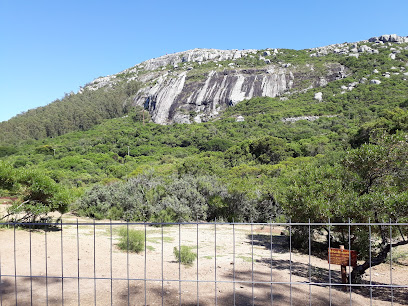
Reptilario del Cerro Pan de Azúcar
Explore the fascinating world of reptiles at Reptilario del Cerro Pan de Azúcar, a unique animal park in Piriápolis, Uruguay.
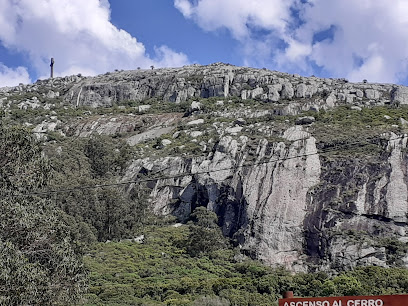
CERRO PAN DE AZUCAR
Explore Cerro Pan de Azúcar, a breathtaking Uruguayan landmark offering stunning coastal views, diverse wildlife, and rewarding hiking trails for every nature enthusiast.
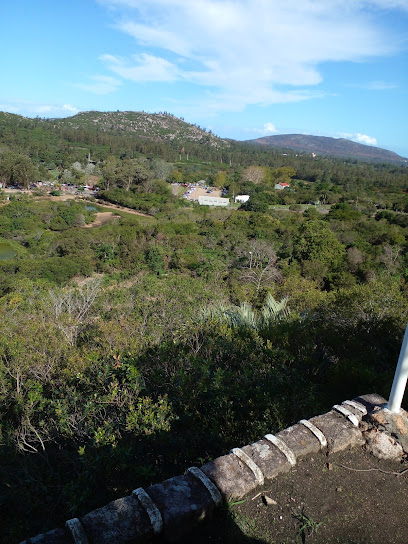
Restaurant Hamburger
Discover the best burgers in Piriápolis at Restaurant Hamburger, where local flavors meet a vibrant coastal atmosphere.

Ascenso al Cerro Pan de Azúcar
Explore the breathtaking landscapes and adventure-filled trails at Ascenso al Cerro Pan de Azúcar in Piriápolis, Uruguay.

PIRIA PARK
Explore Piria Park, a beautiful ecological park in Piriápolis offering adventure sports and breathtaking natural landscapes for an unforgettable experience.
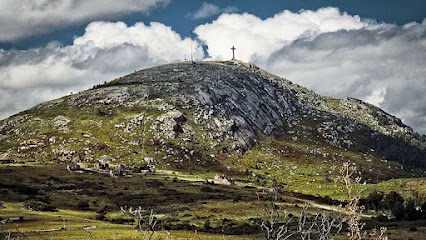
Aqui Estoy
Discover Aqui Estoy in Maldonado: A vibrant shopping center offering diverse shops, dining, and entertainment for an unforgettable experience.

Essential places to dine
San Antonio Hill
Discover breathtaking views and serene landscapes at San Antonio Hill in Piriápolis - a perfect blend of nature and culinary delights.
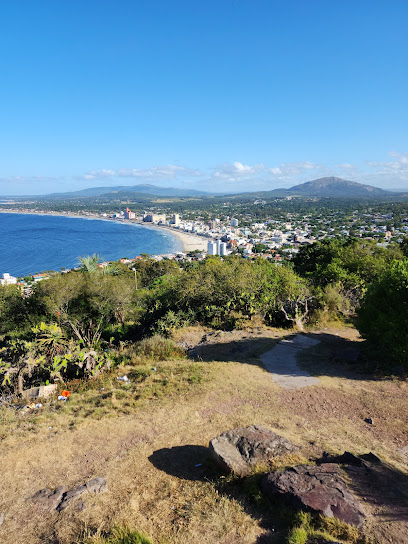
Alba Express
Experience authentic Uruguayan cuisine at Alba Express in Piriápolis - where every meal is a delightful adventure.
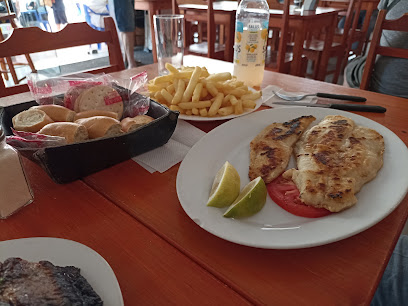
Restaurant Yoyo
Discover culinary excellence at Restaurant Yoyo in Piriápolis - where local flavors meet international cuisine by the sea.
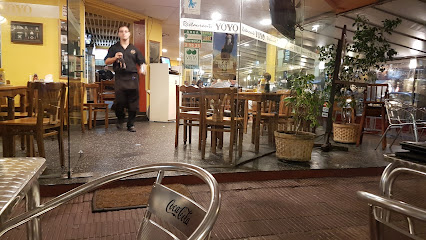
La Goleta
Experience delicious fast food with stunning seaside views at La Goleta in Piriápolis.
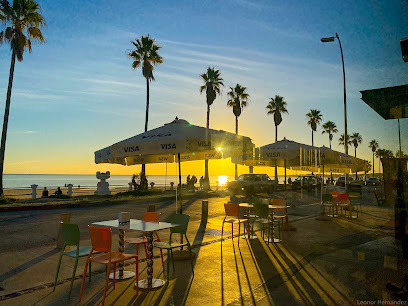
Kraken
Experience unforgettable dining at Kraken in Piriápolis - where fresh seafood meets Uruguayan hospitality.
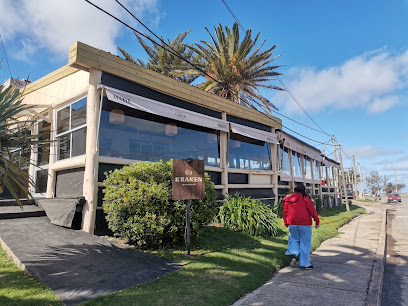
Puertito Don Anselmo
Discover Puertito Don Anselmo: A premier seafood restaurant in Piriápolis offering fresh catches and breathtaking ocean views.
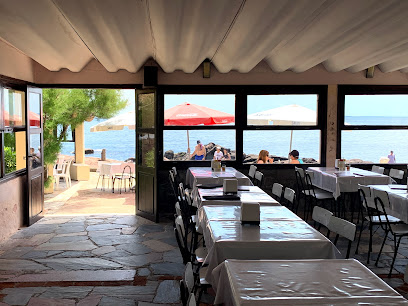
Ocho Nudos ~
Discover the culinary delights of Ocho Nudos in Piriápolis – where fresh seafood meets stunning coastal views.

Poseidón Restaurante
Discover fresh seafood delights with breathtaking ocean views at Poseidón Restaurante in Piriápolis.
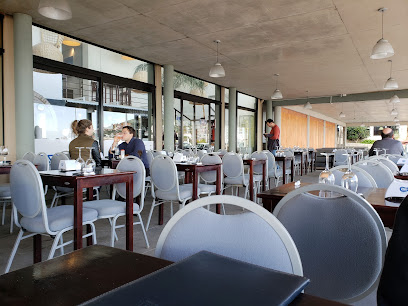
Picasso Restaurante
Experience the best seafood dining at Picasso Restaurante in Piriápolis - where every meal is an artistic delight!
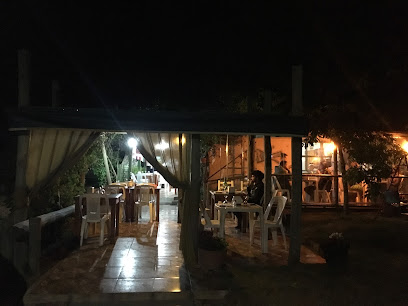
Restaurante La Corniche
Discover Restaurante La Corniche in Piriápolis – where exquisite coffee meets delicious grilled cuisine amidst stunning coastal views.
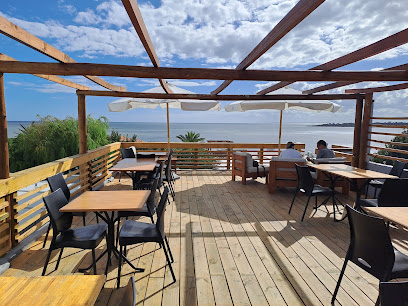
Drakar
Experience authentic Uruguayan cuisine with stunning ocean views at Drakar in Piriápolis.
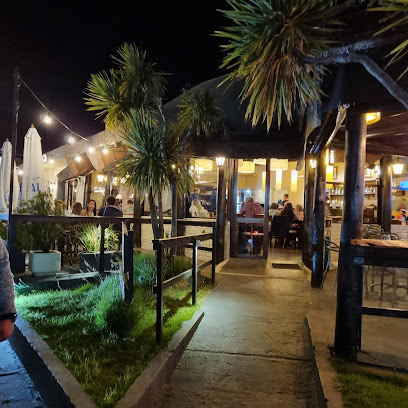
Trattoria Da Piero
Discover authentic Italian flavors at Trattoria Da Piero in beautiful Piriápolis – where every meal is a celebration of Italy.
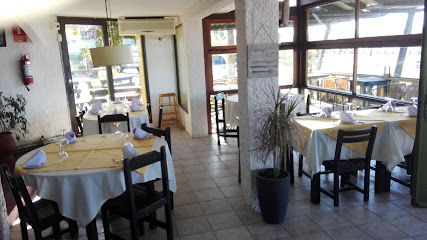
Don Quijote
Experience authentic Uruguayan cuisine at Don Quijote in Piriápolis - where every meal comes with stunning ocean views.
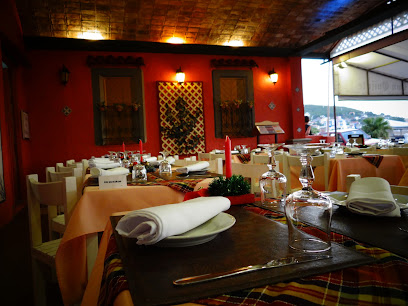
Restaurant Aquel Abrazo
Discover the rich flavors of Uruguay at Restaurant Aquel Abrazo in Punta Negra - where culinary excellence meets breathtaking coastal views.
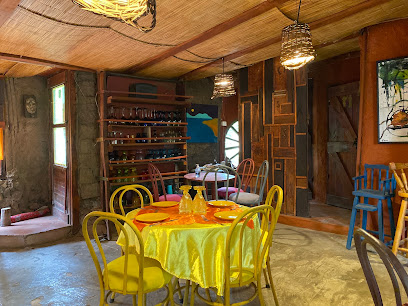
Rocco's Cucina Italiana
Experience the best of Italian cuisine at Rocco's Cucina Italiana in Piriápolis – where every dish tells a story.
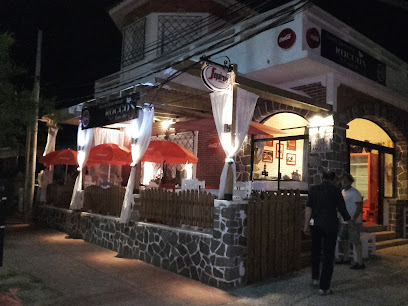
Markets, malls and hidden boutiques
Panaderia La 60
Experience the best of Uruguayan pastries and breads at Panaderia La 60 in Pan de Azucar, where every bite tells a story.
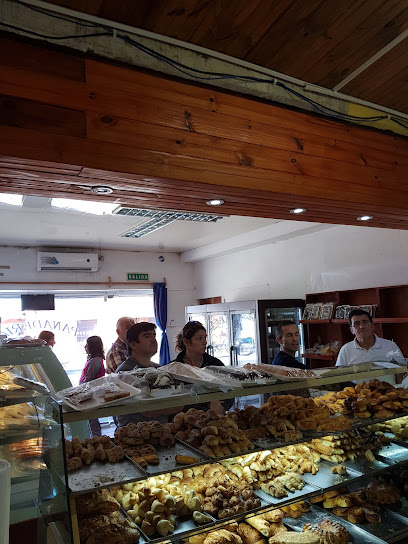
Maria Amalia
Explore Maria Amalia in Pan de Azúcar for unique artisan crafts and local souvenirs that embody Uruguay's rich heritage.
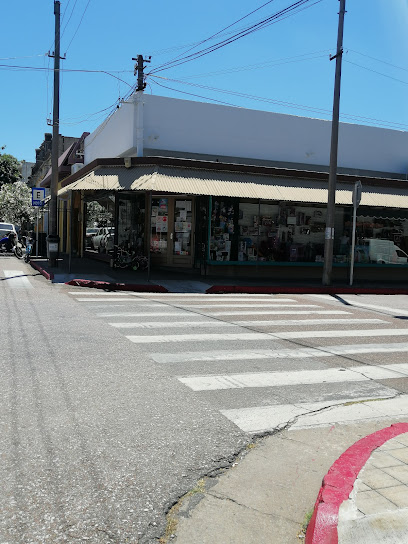
ALIMARKET
Explore ALIMARKET in Pan de Azúcar: Your go-to supermarket for local flavors and international products.
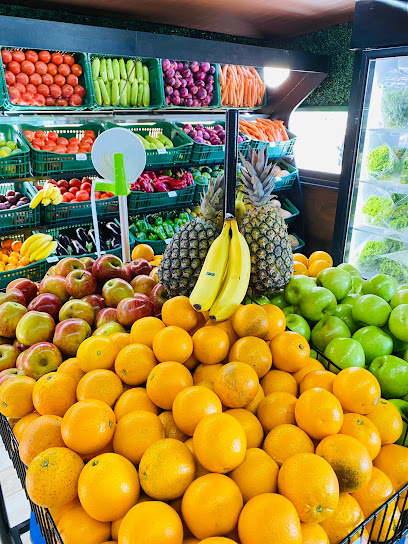
Papeleria Centro
Discover unique crafts and local artistry at Papeleria Centro, the heart of creativity in Pan de Azúcar, Uruguay.

Minimarket Lo de Sandra
Experience the flavors of Uruguay at Minimarket Lo de Sandra, your go-to grocery store in Piriápolis for local products and everyday essentials.
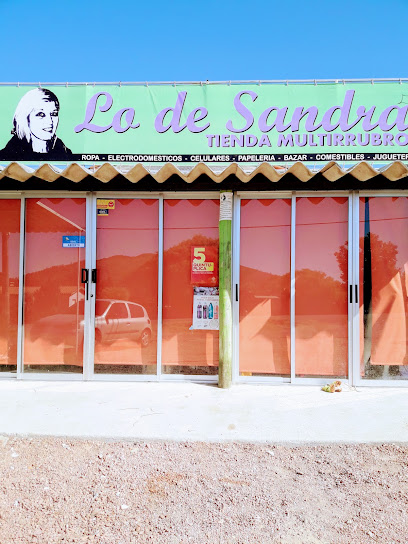
Panda Hogar
Explore Panda Hogar in Pan de Azúcar for stylish and affordable furniture that transforms your living space into a home.
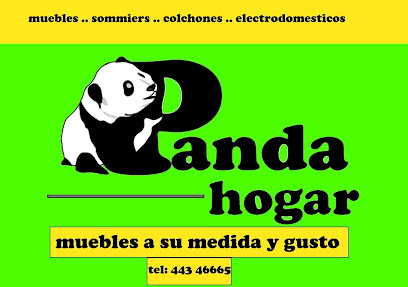
Provisión Goma Goma
Explore the flavors of Uruguay at Provisión Goma Goma, the vibrant supermarket in Pan de Azúcar offering local delicacies and everyday essentials.
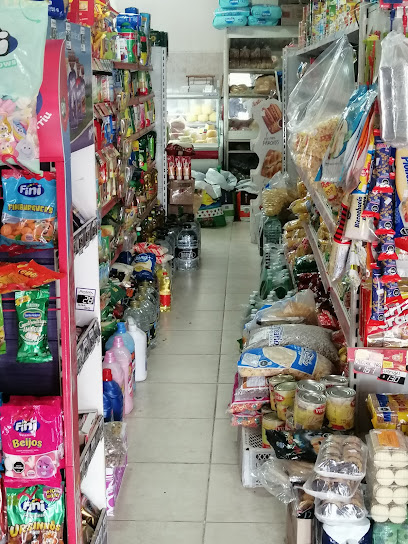
zonafashion
Explore ZonaFashion in Pan de Azúcar for stylish clothing that blends local culture and contemporary fashion in a vibrant shopping atmosphere.
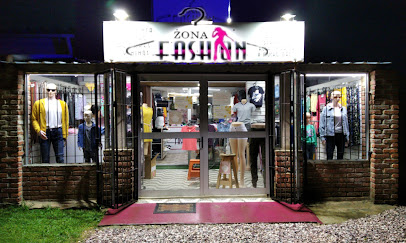
Almacén Los 3 Chanchitos
Explore local flavors at Almacén Los 3 Chanchitos, a charming supermarket in Pan de Azúcar, offering fresh produce and authentic Uruguayan delicacies.
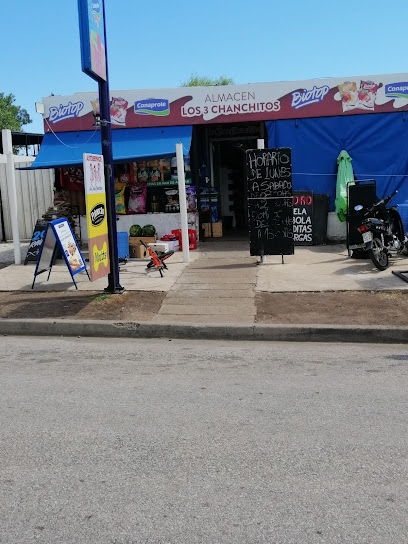
Maura Store
Explore Maura Store in Piriápolis for trendy clothing and a taste of local fashion culture on your coastal adventure.
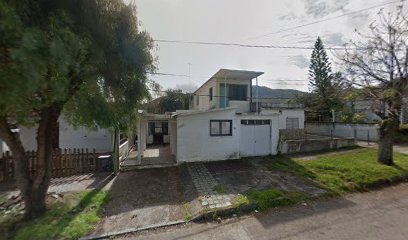
Parador de la Reserva Pan de Azúcar, Piriápolis
Experience local flavors at Parador de la Reserva Pan de Azúcar, a unique grocery store in Piriápolis offering artisanal products and fresh produce.
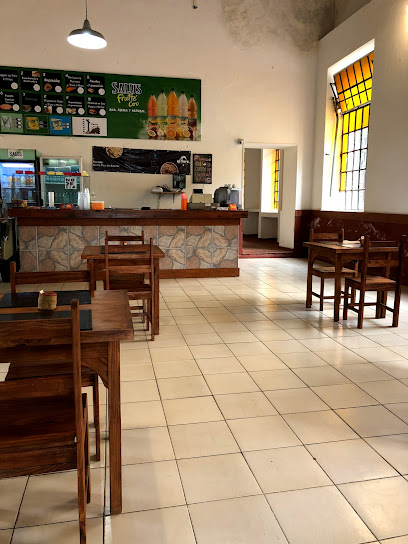
Farmashop 110
Discover Farmashop 110 in Pan de Azúcar for all your health and beauty needs, from cosmetics to medical supplies, all in one convenient location.

LowCost Accesorios
Explore LowCost Accesorios in Pan de Azúcar for unbeatable home goods at affordable prices—perfect for tourists and locals alike.

Mercado Los 3 Hermanos
Explore Mercado Los 3 Hermanos in Pan de Azúcar for a taste of local Uruguayan culture, fresh produce, and unique culinary delights.
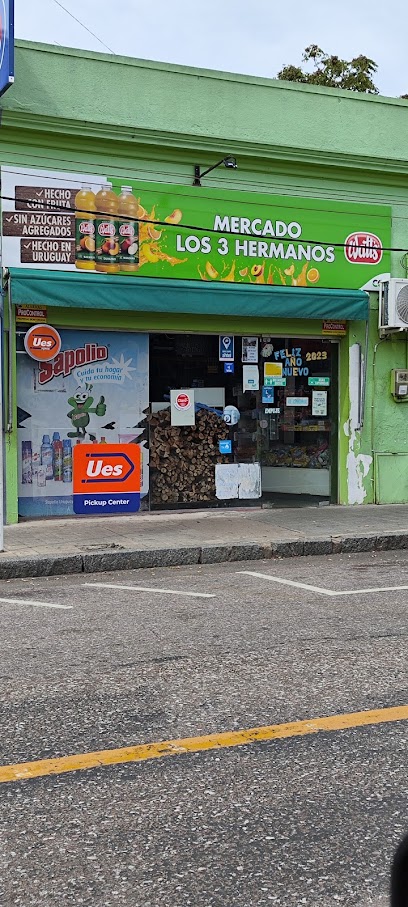
ValMac
Discover unique souvenirs and local crafts at ValMac Gift Shop in scenic Piriápolis, the perfect stop for tourists seeking authentic treasures.
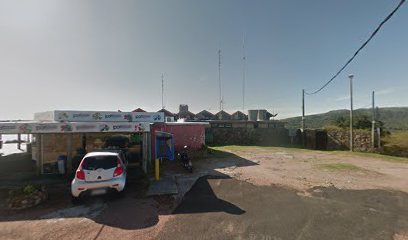
Essential bars & hidden hideouts
AGORA
Experience the vibrant nightlife of Pan de Azúcar at AGORA, where delicious food and lively atmosphere come together.
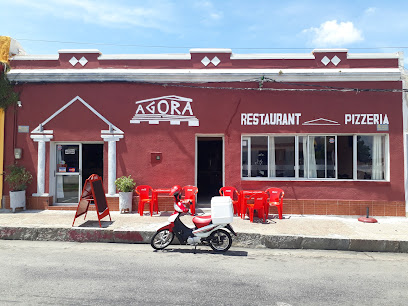
Pool Del Beto
Experience the vibrant atmosphere and refreshing drinks at Pool Del Beto, the ideal bar retreat in beautiful Piriápolis.
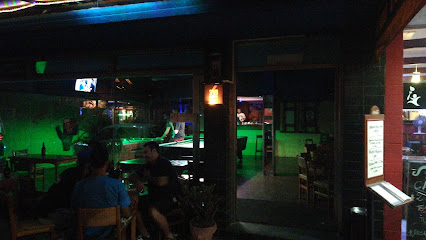
Palú Bar
Experience the vibrant nightlife at Palú Bar in Piriápolis, where delicious cocktails meet stunning beach views for an unforgettable evening.
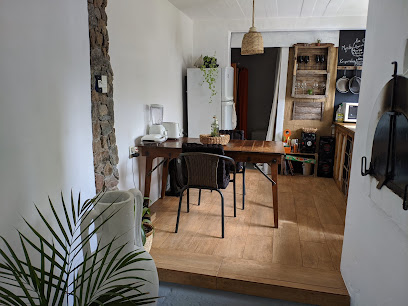
Shaker
Experience the vibrant nightlife at Shaker in Piriápolis, where creative cocktails and a lively atmosphere await you.
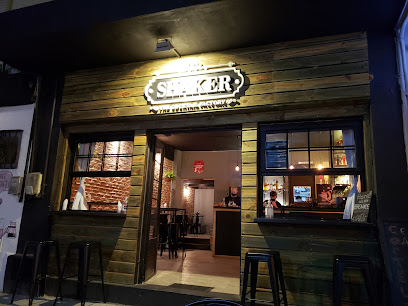
Favela Chic cabañas y bar
Discover the lively spirit of Piriápolis at Favela Chic Cabañas y Bar, where vibrant cocktails and unforgettable nights await.

El Quincho
Experience the charm of El Quincho in Piriápolis, where stunning views meet delightful drinks in a cozy, rustic atmosphere.
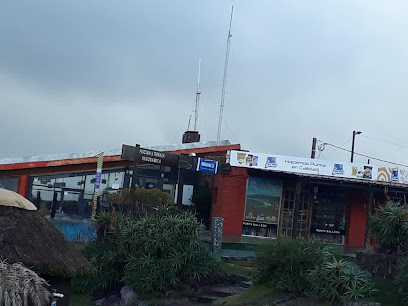
I wanna beach
Discover the enchanting I Wanna Beach in Piriápolis, where sun, sea, and exquisite local cuisine await every traveler.

HEADQUARTERS AND CANTINA PIRIAPOLIS BOWLS CLUB
Discover the lively Piriápolis Bowls Club, where local culture meets a vibrant bar atmosphere in the heart of Piriápolis, Uruguay.
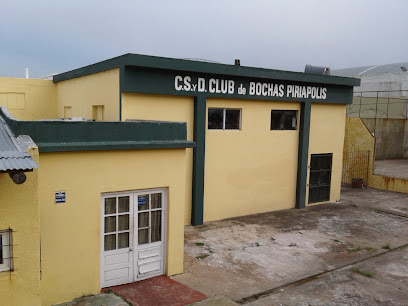
MaluBar
Discover the vibrant atmosphere and exceptional drinks at MaluBar, a must-visit bar in the heart of Maldonado, Uruguay.
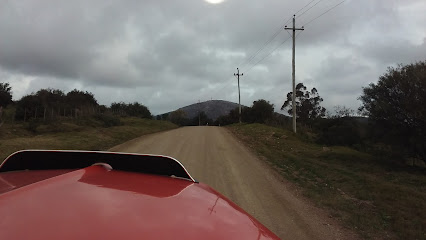
Noctiluca, Piriapólis, departamento de Maldonado
Discover the vibrant nightlife of Piriapólis at Noctiluca, a lively pub offering a wide selection of drinks and a friendly atmosphere.
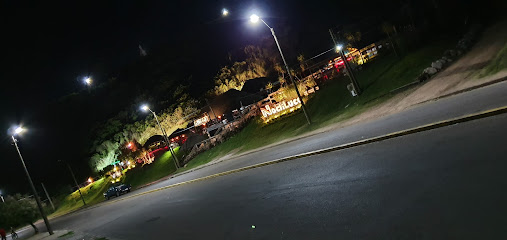
Beach Bar
Discover the ultimate beachside escape at Beach Bar in Piriápolis, where refreshing drinks and stunning ocean views await.
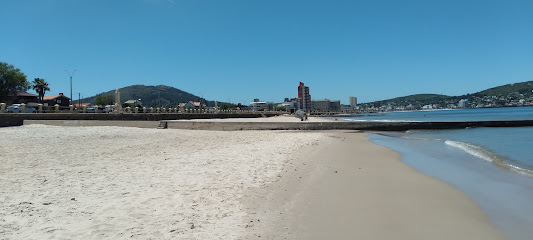
J
Experience the vibrant nightlife at J Bar in Playa Verde, offering a fantastic drink selection and an inviting atmosphere for all.
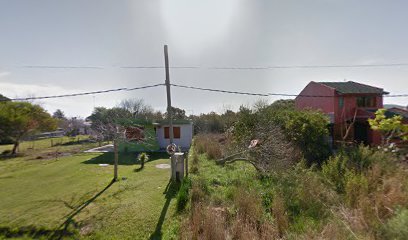
Bar va Marchando
Discover the vibrant atmosphere of Bar va Marchando, where local flavors and friendly service come together in the heart of Pan de Azúcar, Uruguay.
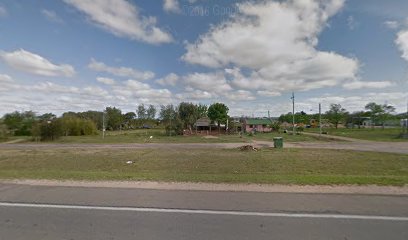
Paralelo 84
Experience the lively atmosphere and breathtaking views at Paralelo 84, the quintessential bar in Piriápolis, Uruguay.
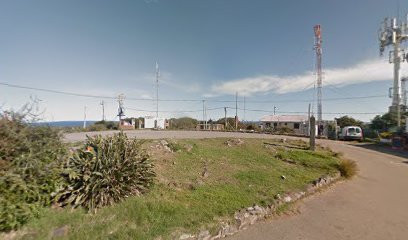
Moscato
Experience the enchanting ambiance of Moscato in Piriápolis, where scenic views and delightful beverages await every visitor.
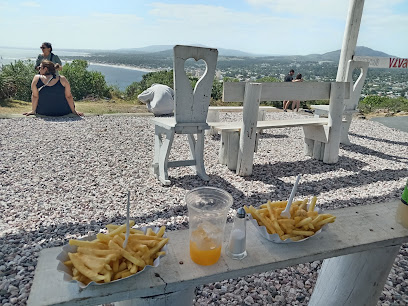
Local Phrases about Cerro Pan de Azúcar
-
- HelloHola
[oh-lah] - GoodbyeChau
[chow] - YesSí
[see] - NoNo
[noh] - Please/You're welcomePor favor/De nada
[por fah-vor/deh nah-dah] - Thank youGracias
[grah-see-ahs] - Excuse me/SorryPerdón/Disculpa
[pair-dohn/dees-cool-pah] - How are you?¿Cómo estás?
[koh-moh ehs-tahs] - Fine. And you?Bien. ¿Y tú?
[bee-ehn. ee too] - Do you speak English?¿Hablás inglés?
[ah-blahs een-glays] - I don't understandNo entiendo
[noh ehn-tee-ehn-doh]
- HelloHola
-
- I'd like to see the menu, pleaseMe gustaría ver el menú, por favor
[meh goos-tah-ree-ah behr ehl meh-noo, por fah-vor] - I don't eat meatNo como carne
[noh koh-moh kahr-neh] - Cheers!¡Salud!
[sah-lood] - I would like to pay, pleaseQuisiera pagar, por favor
[kee-see-eh-rah pah-gahr, por fah-vor]
- I'd like to see the menu, pleaseMe gustaría ver el menú, por favor
-
- Help!¡Ayuda!
[ah-yoo-dah] - Go away!¡Vete!
[veh-teh] - Call the Police!¡Llame a la policía!
[yah-meh ah lah poh-lee-see-ah] - Call a doctor!¡Llame a un médico!
[yah-meh ah oon meh-dee-koh] - I'm lostEstoy perdido
[ehs-toy pair-dee-doh] - I'm illEstoy enfermo
[ehs-toy ehn-fehr-moh]
- Help!¡Ayuda!
-
- I'd like to buy...Quisiera comprar...
[kee-see-eh-rah kohm-prahr...] - I'm just lookingSolo estoy mirando
[soh-loh ehs-toy mee-rahn-doh] - How much is it?¿Cuánto cuesta?
[kwan-to kwehs-tah] - That's too expensiveEso es muy caro
[eh-so ehs mooee kah-roh] - Can you lower the price?¿Puede bajar el precio?
[pweh-deh bah-har ehl pree-syoh]
- I'd like to buy...Quisiera comprar...
-
- What time is it?¿Qué hora es?
[keh oh-rah ehs] - It's one o'clockEs la una
[ehs lah oo-nah] - Half past (10)Las diez y media
[lahs dyehs ee meh-dee-ah] - MorningMañana
[mah-nyah-nah] - AfternoonTarde
[tahr-deh] - EveningNoche
[noh-cheh] - YesterdayAyer
[ah-yehr] - TodayHoy
[oy] - TomorrowMañana
[mah-nyah-nah] - 1Uno
[oo-noh] - 2Dos
[dohs] - 3Tres
[trehs] - 4Cuatro
[kwa-troh] - 5Cinco
[seen-koh] - 6Seis
[says] - 7Siete
[syeh-teh] - 8Ocho
[oh-choh] - 9Nueve
[nweh-veh] - 10Diez
[dyehs]
- What time is it?¿Qué hora es?
-
- Where's a/the...?¿Dónde está...?
[dohn-deh ehs-tah] - What's the address?¿Cuál es la dirección?
[kwal ehs lah dee-rehk-syon] - Can you show me (on the map)?¿Puedes mostrarme (en el mapa)?
[pweh-dehs mohs-trar-meh (ehn ehl mah-pah)] - When's the next (bus)?¿Cuándo es el próximo (autobús)?
[kwan-doh ehs ehl proh-ksee-moh (ow-toh-boos)] - A ticket (to ....)Un boleto (para ....)
[oon boh-leh-toh (pah-rah)]
- Where's a/the...?¿Dónde está...?
History of Cerro Pan de Azúcar
-
Before the arrival of Europeans, the region around Cerro Pan de Azúcar was inhabited by indigenous peoples, primarily the Charrúa and Guaraní tribes. These groups lived off the land, relying on hunting, fishing, and foraging. They held the mountain in spiritual regard, often using it as a landmark for navigation and as a site for ceremonial gatherings.
-
Cerro Pan de Azúcar, which translates to 'Sugarloaf Hill,' was named by Spanish explorers in the 16th century due to its resemblance to the sugarloaf molds used in sugar processing at the time. The area became a point of interest for the Spanish as they explored the Río de la Plata basin and sought to establish trade routes and settlements.
-
In the late 19th century, Francisco Piria, a visionary entrepreneur, saw the potential of the area surrounding Cerro Pan de Azúcar. He founded the town of Piriápolis in 1890, aiming to create a luxurious seaside resort. Piria also established various infrastructures, including roads, hotels, and a castle inspired by medieval architecture. His efforts significantly boosted the region's tourism and development.
-
In 1980, Cerro Pan de Azúcar and its surrounding areas were declared a nature reserve to protect the unique flora and fauna found there. The reserve encompasses over 3000 hectares and is home to various species of birds, mammals, and plants, many of which are endemic to the region. The initiative was part of Uruguay's broader efforts to conserve its natural heritage and promote eco-tourism.
-
One of the most iconic features of Cerro Pan de Azúcar is the giant cross at its summit, which was erected in 1933. The cross stands 35 meters tall and serves as a symbol of faith and peace. It has become a significant pilgrimage site, especially during Holy Week, attracting visitors who hike to the top for both spiritual reasons and the panoramic views of the surrounding landscape.
-
Today, Cerro Pan de Azúcar is a popular destination for both locals and tourists. The area offers various activities such as hiking, bird-watching, and visiting the on-site zoo that focuses on native species conservation. The combination of historical significance, natural beauty, and recreational opportunities makes it a must-visit location in Uruguay.
Cerro Pan de Azúcar Essentials
-
Cerro Pan de Azúcar is located in the Maldonado Department of Uruguay. The nearest major city is Montevideo, which has an international airport, Carrasco International Airport (MVD). From Montevideo, you can take a bus from the Tres Cruces bus terminal to Piriápolis, which is the closest town to Cerro Pan de Azúcar. The bus journey takes approximately 2 hours. Alternatively, you can rent a car and drive to Piriápolis, which offers more flexibility and takes about 1.5 hours.
-
Once in Piriápolis, local buses and taxis can take you to Cerro Pan de Azúcar. The park where Cerro Pan de Azúcar is located is best explored on foot, so be prepared for some hiking. For convenience, renting a car might be a better option if you plan to explore other attractions in the region.
-
The official currency in Uruguay is the Uruguayan Peso (UYU). Credit cards are widely accepted in hotels, restaurants, and shops in Piriápolis and Montevideo. However, it is advisable to carry some cash, especially if you plan to visit smaller establishments or rural areas. ATMs are available in Piriápolis for cash withdrawals.
-
Cerro Pan de Azúcar and its surrounding areas are generally safe for tourists. However, it is always wise to take standard precautions such as avoiding isolated areas after dark and keeping an eye on your belongings. Piriápolis is a relatively safe town, but like any tourist destination, be cautious in crowded places to avoid pickpocketing.
-
In case of emergency, dial 911 for immediate assistance. Piriápolis has a local police station and medical facilities. It's recommended to have travel insurance that covers medical emergencies. Pharmacies are available in the town for minor health issues where you can purchase over-the-counter medications.
-
Fashion: Do wear comfortable hiking shoes and weather-appropriate clothing when visiting Cerro Pan de Azúcar. Avoid wearing flashy jewelry. Religion: Do respect local customs and traditions. While Uruguay is a secular country, respect for heritage sites is important. Public Transport: Do have small change available for bus fares. Don’t eat or drink on public transport. Greetings: Do greet people with a friendly 'Hola' or 'Buen día.' A handshake is common when meeting someone for the first time. Eating & Drinking: Do try local delicacies and accept food offerings graciously. Don’t refuse hospitality, as it is considered impolite.
-
To experience Cerro Pan de Azúcar like a local, visit during the early morning hours to avoid the midday heat and crowds. Engage with local guides who can offer insights into the park's history and biodiversity. Don't miss the opportunity to visit the Pan de Azúcar Zoo and the summit of the hill for panoramic views. Additionally, try the local cuisine in Piriápolis, such as fresh seafood and traditional Uruguayan barbecue (asado).
Trending Landmarks in Cerro Pan de Azúcar
-
Reserva de Flora y Fauna del Pan de Azúcar
-
Zorrilla de San Martín Park
-
Cruz de Pan de Azúcar
-
Entrada de ingreso al cerro y reserva Pan de Azúcar
-
Reptilario del Cerro Pan de Azúcar
-
CERRO PAN DE AZUCAR
-
Reserva natural Pan de Azucar
-
Cerro Pan de Azucar
-
Ascenso al Cerro Pan de Azúcar
-
Canteras Del Cerro Pan De Azúcar
-
Senderos de Flora y Fauna Arroyo Pan de Azúcar
-
Cerro de las Ánimas
-
Cerro del Gigante
-
las abejitas







